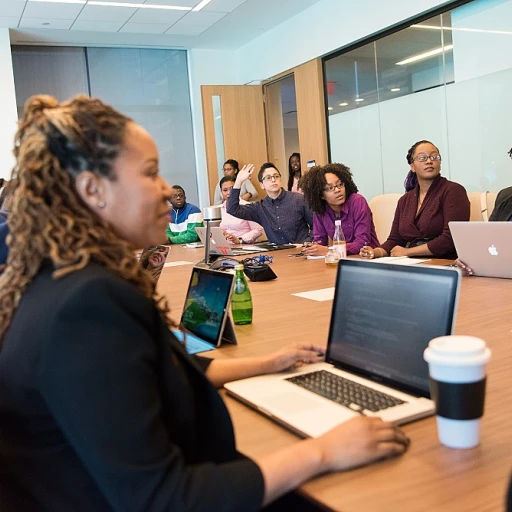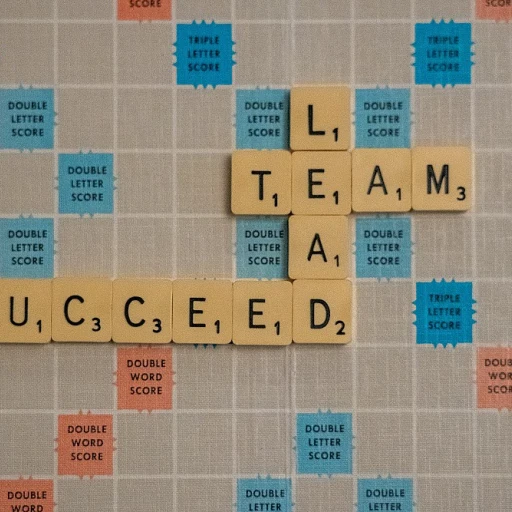
Understanding the Importance of Employee Retention
The Critical Need to Prioritize Employee Retention
In today's fast-paced business world, understanding the importance of employee retention is essential for organizations striving for success. High turnover rates can be detrimental, leading to instability and increased operational costs. When employees feel valued and engaged, they are more likely to remain with the company for the long term, providing a high-quality thread that weaves the fabric of a successful enterprise.
Employee retention goes beyond merely keeping staff; it involves ensuring that employees are satisfied, motivated, and inspired to contribute their best work. Companies need to approach this aspect strategically, like selecting the right type of embroidery for a delicate piece, carefully choosing methods that will fill the gaps in employee satisfaction and performance.
For employers, understanding what makes employees tick can be a mix of art and science. The most effective strategies combine creative approaches and logical processes. This blend helps to craft an environment where employees feel they belong, similar to creating intricate designs with an embroidery machine.
Implementing essential tools and resources ensures that employees grow and develop within the company. From crafting an effective hiring process to addressing employee feedback, the right mix can be achieved through a comprehensive selection of employee engagement strategies. For insights on HR best practices to streamline and optimize this process, check out how effective HR document management software can be a game-changer in enhancing employee retention.
Crafting an Effective Hiring Process
Creating a Smooth Onboarding Experience
The hiring process is a pivotal stage in ensuring that you're bringing in the best talent to your organization. Crafting an effective process starts with an essential selection strategy, which will help prevent potential issues down the line. As a hiring manager, there are key considerations that can make your approach successful.
First, it's critical to define the role clearly. Much like selecting the right fabric for an embroidery machine, ensuring a correct fit between candidates and job requirements is vital. A well-defined role will provide potential employees with a clear understanding of what's expected from them and how they can fill that role effectively.
Moreover, utilizing the right tools such as structured interviews and skill assessments is essential. This not only aids in objectively assessing candidates' capabilities but also minimizes bias. For instance, a standardized set of questions works like machine embroidery where a structured method is essential for precision and quality.
The selection process should also involve a mixing of automated and human resources. Utilizing technology can streamline processes, analogous to using the latest technology like embroidery hoops or maggieframe powerful systems for ease and efficiency. However, ensuring a human touch in the form of face-to-face conversations adds a personal dimension to the process which is crucial for making candidates feel valued and understood.
Additionally, integrating a robust training and development program from the get-go shows prospective employees that you’re invested in their long-term growth and success, much like a thread that runs through the entire tapestry of their career within the company.
To reinforce these strategies, you might refer to an in-depth analysis from the McDonald's employee handbook, which illustrates how comprehensive onboarding policies are directly linked to high employee retention rates.
In summary, a careful and tailored hiring process establishes a foundation for not just securing top talent but ensuring that they remain engaged and motivated within the company for the long haul.
Building a Positive Workplace Culture
The Tapestry of a Positive Workplace Culture
Creating a positive workplace culture is akin to weaving a fine piece of embroidery. Each thread, tool, and machine has its role. When done correctly, this mix results in an environment that not only attracts top talent but also retains them for the long term. Crafting a supportive and inclusive culture is a key aspect of employee retention. The colors of culture are vibrant—ranging from hosting essential mix sessions that bring together employees from different departments to share ideas, to developing a privacy policy that ensures employee information is secure. Indeed, an open and honest environment fills the workplace with trust and collaboration. ### Mixing Culture with Organizational Needs One cannot skip main cultural elements to simply fit into an organizational framework. Instead, organizations must integrate essential selection tools to align their workplace culture with their goals. As the main content of this process unfolds, hiring managers should consider high quality interactions with their teams as essential tips for fostering a thriving workplace environment. An authentic culture allows for the expression of individual will, which is essential for creativity and innovation. Employees who feel respected and valued will be more likely to stay in an organization. This aligns with the fabric of retention strategies that mix professional growth with personal fulfillment. ### Tools that Fill the Gaps Utilizing tools such as embroidery machines for the seamless stitching of employee engagement initiatives, or even exploring digital plug-ins that enhance communication, can aid in building a robust workplace environment. Moreover, just like the smooth operation of magnetic embroidery hoops, efficient processes that cater to high volume demands within the company create a balanced work-life experience. Implementing these strategies will provide a strong foundation for a positive workplace culture. Investing in such an environment helps in guiding interns for long-term success, ensuring that they grow and eventually contribute to the embroidery of company values. As you embolden your culture, remember that the tree selection of values you uphold influences employee satisfaction and retention. By focusing on the essential mix of strategies that incorporate both organizational objectives and employee well-being, firms can spin a tapestry of tradition, trust, and transformation within their teams.Implementing Continuous Development Opportunities
Continuous Opportunities for Growth and Development
Creating an environment where employees can grow is akin to using high-quality tools in machine embroidery. The embroidery machine, just like a company, must consistently thread new patterns to ensure its creations remain outstanding. In the business realm, providing continuous development opportunities is essential for retaining top talent over the long term. Employees are more likely to stay with a company when they feel their career paths are being stitched with deliberate care and expertise. Here are some key strategies for promoting development:- Structured Learning Paths: Design clear learning journeys that mix in a fabric of online courses, interactive workshops, and hands-on projects. These allow employees to build and fill gaps in their skills and knowledge systematically.
- Mentorship Programs: Like embroidery hoops providing steady support, mentors nurture growth by offering guidance and insights. Pairing employees with experienced mentors helps in threading their career development.
Recognizing and Rewarding Employee Contributions
Recognizing Achievements Can Sew Strong Bonds in the Workplace
In a competitive working environment, consistently acknowledging and rewarding employee contributions is as essential as the hiring process itself. This step threads through an organization's culture, embedding the recognition in its fabric, which in turn stitches loyalty and long-term commitment.
Employers need to pay attention to mixing traditional and innovative recognition methods. The timeless methods of rewards, such as bonuses and promotions, fill the immediate need for appreciation but incorporating modern recognition can elevate engagement.
High-quality tools, such as an employee recognition software, can provide personalized acknowledgments at significant milestones. Just as an embroidery machine requires constant feedback to produce intricate designs, employees thrive on regular, genuine appreciation from their leaders.
Acknowledgment Options as Varied as an Embroidery Hoop
- Formal recognition ceremonies can symbolize an essential selection for top performers.
- Informal thank you notes or public accolades can operate as embroidery hoops, framing daily achievements in a meaningful way.
- Professional development opportunities act as a magnetic pull for committed individuals, helping them envision growing roots within the organization, much like a tree developing branches over time.
Providing a mix of fiscal and non-fiscal rewards cultivates a positive and enduring atmosphere, weaving together a workplace where employees are encouraged to use their talents to the fullest. As stitches in an elaborate design, each recognition gesture enhances the overall organizational fabric, securing both employee satisfaction and retention.
Addressing Employee Feedback and Concerns
Fostering Open Communication Channels
When addressing employee feedback and concerns, it’s crucial to cultivate a culture of open and honest communication. This can help employees feel valued and respected, ultimately boosting retention rates. Establishing an environment where team members feel comfortable expressing their ideas and issues contributes significantly to job satisfaction.
Creating multiple channels for feedback, whether through regular one-on-one meetings, suggestion boxes, or utilizing digital communication tools, can ensure that employees have a mix of platforms to share their thoughts. The best approaches often involve a mix of formal and informal mechanisms – embedding feedback into the fabric of your workplace culture is key.
Proactive Listening and Response
It is essential to not only listen but also demonstrate that you’re actively addressing concerns. This may require hiring managers to work closely with team leaders to ensure prompt and thoughtful responses to feedback. This proactive approach will help you maintain high quality employee relations and prevent potential misunderstandings or dissatisfaction.
Integrating feedback into decision-making processes can enhance trust between the employer and employees. Actions taken as a result of feedback should be communicated clearly, showcasing a transparent process that values input from all levels.
Continuous Improvement with Feedback
Collecting feedback should not be a one-time event but rather an ongoing process that aims for long-term improvements. It’s akin to the process of machine embroidery – continuously threading new insights into the existing fabric of workplace dynamics. Whether implementing essential mix strategies or adapting your overall thread of operations, addressing feedback is an ongoing journey.
Using tools to collect and analyze feedback data from high volume teams can fill critical gaps in understanding, allowing for more informed decision making. With the right tools, organizations can provide essential tips for improvements, ensuring that employee concerns are continuously heard and resolved, stitching a closer bond between management and employees over time.












